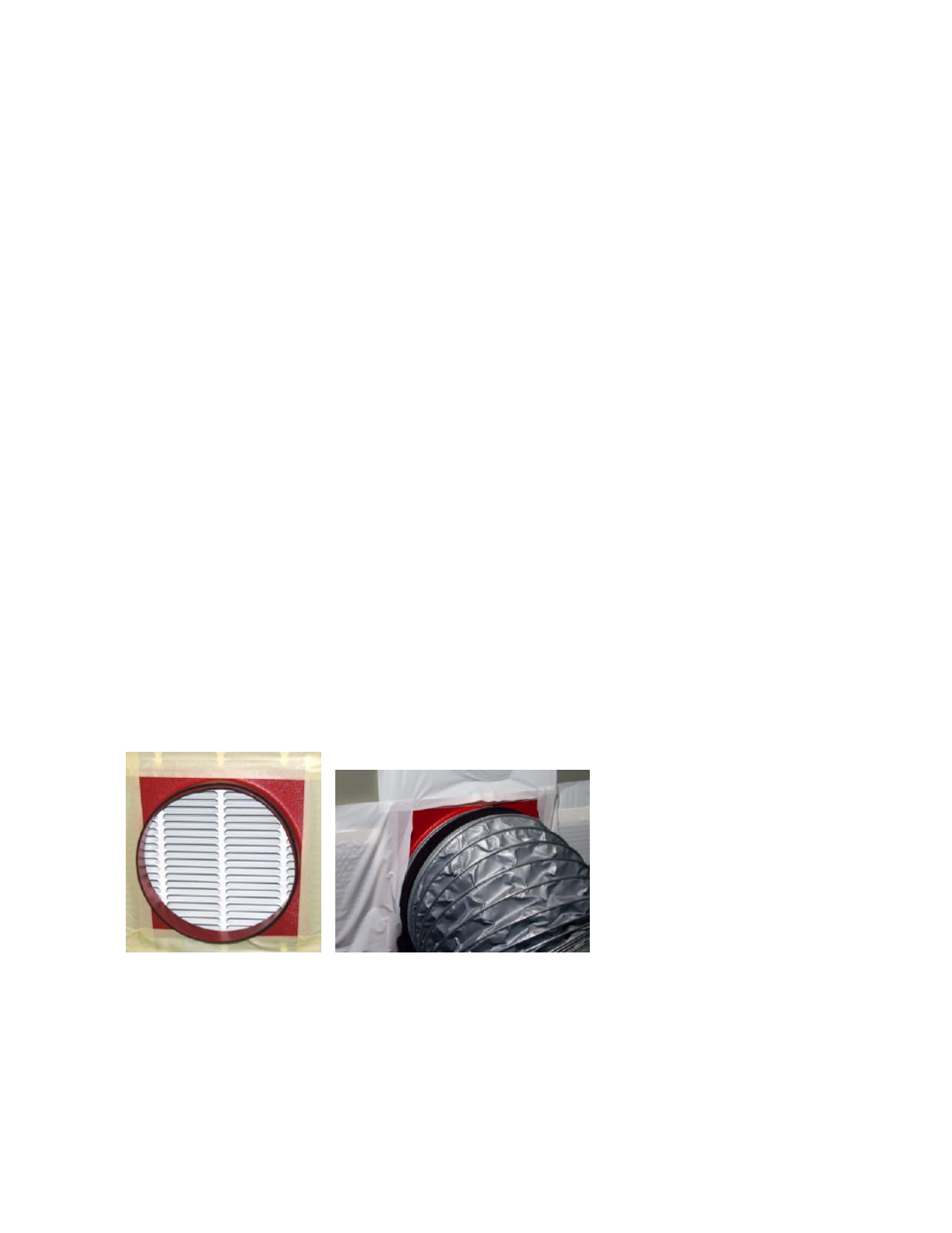Connect the ductester to the duct system, Connect the flex duct to return register – Retrotec DucTester 200 Series Residential Applications User Manual
Page 27

Page 27 of 91
©Retrotec Inc. 2015
Some programs require test results from two test measurement locations. The two results are
averaged, which helps eliminate error due to the location of the test measurement point.
In duct systems that are relatively tight (200 CFM or less), the induced test pressure in the system is
more uniform, and all locations will provide similar results. Essentially, if a duct system passes an energy
code requirement of 100 CFM or less, the test point location will not affect results in any significant way.
New home testing is typically done using the register closest to the supply plenum which is just fine
most of the time. If the system is too leaky to pass, try placing the blue tube in the return plenum; if the
reading is about the same, the leaks are in the return, if the leaks are a lot less, they are in the supply.
If you have a Blower Door and a pressure pan, pressurize the house to 50 Pascals and then take pressure
readings on the pressure pan, with the pressure pan closing off one register at a time. The leakiest ducts
will be found behind those registers with the highest pressures.
3.8 Connect the DucTester to the Duct System
The DucTester has a 10 inch by 12 foot Flex Duct with a Flange on one end which is normally connected
a return grill, but which can also be connected to the air handler cabinet. When considering where to
connect the DucTester to the duct system, it is important to think about airflow restriction and
accessibility.
3.8.1. Connect the Flex Duct to return register
For most duct tests, the DucTester should be connected to the central return (if there is one) or to the
air handler cabinet itself. If there are multiple returns in a duct system, the return duct work is typically
smaller in size and can cause restrictions in airflow that can create backpressures and contribute to poor
and inaccurate test results. If the air handler is in a difficult location for access (i.e., in the attic or crawl
space), find the closest, largest return grill to the air handler and use that.
1. Choose the main return with the most direct connection to the air handler. Remove filters behind
the return grill.
2. Attach the Flange to the return grill using Grill Mask or high quality masking tape. Seal the remaining
openings with Grill Mask.
3. Attach the open end of the Flex Duct to the Flange (which is attached to the return grill); use the
Velcro strap to secure it to the Flange.
4. Place the DucTester in such a position as to minimize any major bends in the Flex Duct.
Figure 23: Flange taped onto a
return register before attaching the
Flex Duct
Figure 22: Flex Duct connected to the Flange.
